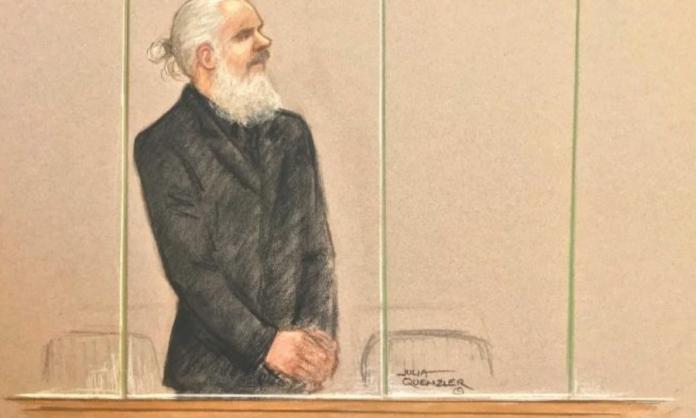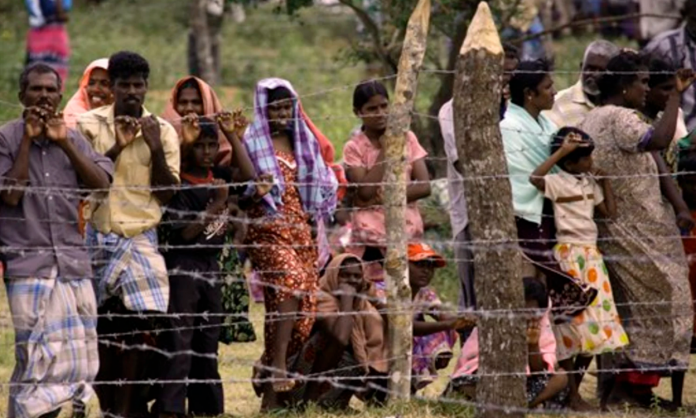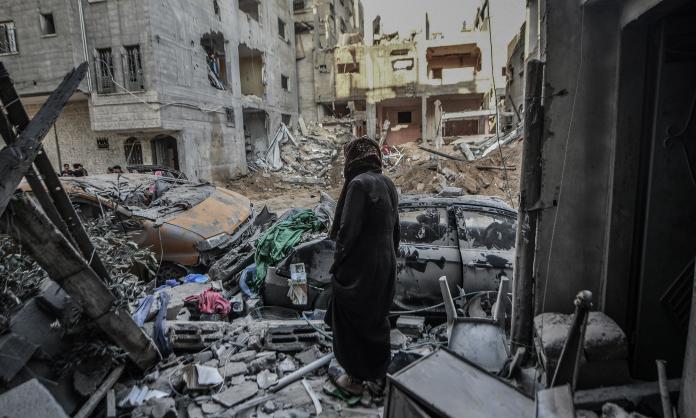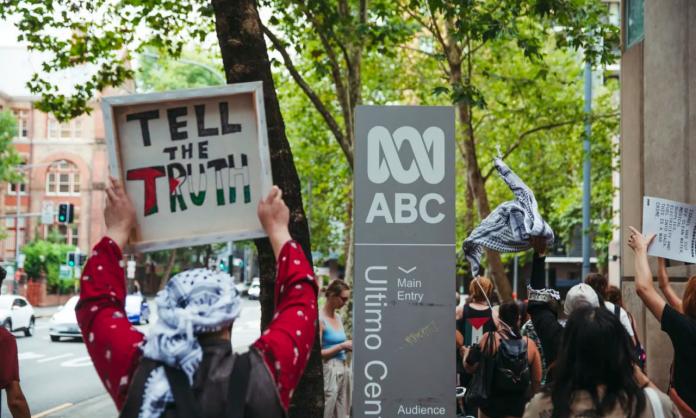“Even in authoritarian countries, information networks are helping people discover new facts and making governments more accountable ... [But] technologies with the potential to open up access to government and promote transparency can also be hijacked by governments to crush dissent and deny human rights ... Some countries have ... violated the privacy of citizens who engage in non-violent political speech. These actions contravene the Universal Declaration of Human Rights, which tells us that all people have the right ‘to seek, receive and impart information and ideas through any media and regardless of frontiers’. With the spread of these restrictive practices, a new information curtain is descending across much of the world. And beyond this partition, viral videos and blog posts are becoming the samizdat of our day. As in the dictatorships of the past, governments are targeting independent thinkers who use these tools.”
– US secretary of state Hillary Clinton speaking at the Newseum, Washington, DC, January 2010
“Hillary Clinton and several thousand diplomats around the world are going to have a heart attack when they wake up one morning and find an entire repository of classified foreign policy is available, in searchable format, to the public.”
– US Army specialist Chelsea Manning in an encrypted message to a confidant, Iraq, May 2010
On the first day of Julian Assange’s extradition hearing in London, lawyers for the US government accused the WikiLeaks founder of putting lives at risk by publishing unredacted documents that identified US military informants in Iraq and Afghanistan. The most extraordinary, yet all too predictable, thing about the allegation was that it didn’t generate a wave of ridicule and derision in the court or among Western media.
The accuser is the same United States that killed an estimated 500,000 Iraqi children through punitive sanctions in the 1990s – a human toll that secretary of state Madeline Albright, responding to 60 Minutes’ Lesley Stahl in 1996, described as “worth it”. It’s the same United States that killed countless civilians in its 2001-02 invasion and ongoing occupation of Afghanistan – countless because, as the head of US Central Command, general Tommy Franks, told a reporter in 2002: “You know, we don't do body counts”. It is the same United States that then obliterated Iraq in an invasion and occupation estimated to have resulted in the deaths of at least several hundred thousand – all on the false pretence of the country having a “weapons of mass destruction” stockpile that at any moment could be directed against Western cities.
The architects of those war crimes faced not so much as a slap on the wrist. In fact, George Bush in the US, Tony Blair in the UK and John Howard in Australia continue to be rolled out as venerated statesmen. The hired guns who cheered them on in the press have shown not an ounce of contrition and continue to receive princely salaries to churn out hit pieces in defence of empire. And the lawyers tut-tut that the people who helped them in the criminal enterprise may have been at risk of exposure because WikiLeaks let the world know what the US was doing.
For the record, the prosecution admits that it cannot prove that anyone was killed as a result of the leaks. The US government indicted Assange on 17 espionage charges and one charge of hacking into a government computer. While the indictments were released by the Trump administration only in 2018, the campaign against WikiLeaks began many years earlier.
Just months after Hillary Clinton made positive remarks about a new samizdat (the publishing, copying and distributing of censored literature in the Soviet Union) of free-flowing information on the internet, the largest leak of secret government documents in US history occurred. The details were front page news throughout 2010.
The secretary of state’s concern about authoritarian governments trampling on the Universal Declaration of Human Rights rapidly diminished. Her urges for non-violent political speech to be safeguarded and her warnings about an odious “information curtain” disappeared almost as quickly as US Army intelligence specialist Manning was arrested and confined to Kuwait’s Camp Arifjan. Manning, responsible for the leak, was detained after confiding in a former hacker, Adrian Lamo, who ratted on the now demoted private first class. “Let’s be clear”, Clinton said in a presser delivered on 29 November at the State Department in Washington, DC, “this disclosure is not just an attack on America’s foreign policy interests. It is an attack on the international community”.
In early 2010, Manning downloaded four US departmental and agency databases containing more than 90,000 Afghanistan war reports, nearly 400,000 Iraq war reports, 800 Guantánamo Bay detainee briefs and 250,000 State Department cables. She then uploaded the information to WikiLeaks with the help of Assange. Given Clinton’s earlier speech about free information making governments more accountable “even in authoritarian countries”, it was ironic that Manning’s early motivation was the US Army’s propping up of the puppet regime of Iraqi prime minister Nouri al-Maliki. As David Leigh and Luke Harding wrote in WikiLeaks: Inside Julian Assange’s War on Secrecy:
“There was one seminal moment that appears to have ignited Manning’s anger. A dispute had arisen concerning 15 Iraqi detainees held by the national Iraqi police force on the grounds that they had been printing ‘anti-Iraqi literature’. The police were refusing to work with the US forces over the matter, and Manning’s job was to investigate and find out who the ‘bad guys’ were. He [at the time, Manning was still going by the name Bradley] got hold of the leaflet that the detained men were distributing and had it translated into English. He was astonished to find that in fact it was a scholarly critique against the Iraqi prime minister ... that tracked the corruption rife within his cabinet.
“‘I immediately took that information and ran to the officer to explain what was going on’, Manning later explained. ‘He didn’t want to hear any of it ... He told me to shut up and explain how we could help the [Iraqi] police in finding MORE detainees.’ Manning noted that, thereafter, ‘everything started slipping ... I saw things differently ... I had always questioned the [way] things worked, and investigated to find the truth ... but that was a point where I was part of something, actively involved in something I was completely against.”
—————
In one of Manning’s leaked videos, a soldier begins laughing – seemingly at the clumsiness with which another gunner is unloading his 30mm chain gun at a wounded, crawling man below.
“God damn it Kyle.”
“Alright, hahaha, I hit him ...”
It’s 12 July 2007, and two US Apache helicopters are circling over a Baghdad suburb, having killed seven men, including Reuters war photographer Namir Noor-Eldeen. His colleague, Saeed Chmagh, is critically wounded.
“Oh yeah, look at those dead bastards.”
“Nice ... Nice.”
“Good shoot’n’.”
“Thank you.”
As Saeed continues to crawl, a black van pulls up to assist. The men in the Apaches seem incredulous and impatient.
“Picking up the wounded?”
“Yeah we’re trying to get permission to engage. C’mon, let us shoot!”
With permission granted, again they open fire. As the dust settles, an impact crater the size of a coconut is visible in the front windshield of the van. More people are dead, including Saeed. The total of murdered is 12. A tank arrives with the ground battalion, running over one of the dead.
“I think they just drove over a body.”
(Laughing) “Really?”
(Laughing) “Yeah.”
When the ground force discovers the two wounded children in the van and rushes them out of the area to find medical assistance, there’s another exchange in the chopper.
“Well it’s their fault for bringing their kids into a battle.”
“That’s right.”
The footage, released on 5 April 2010, is titled Collateral Murder.
WikiLeaks had been publishing documents for more than three years. The more notable leaks detailed corruption in Kenya and at major Swiss and Icelandic banks, the US Army’s operating procedures at its Guantánamo Bay torture camp and the membership list of the fascist British National Party. But Collateral Murder was the first in a series of earth-shattering disclosures from Manning, and it had immediate effect. In the wake of its release, two soldiers from the battalion that carried out the attack, one of whom had taken the wounded children to safety, wrote “An Open Letter of Reconciliation and Responsibility to the Iraqi People”:
“What was shown in the Wikileaks video only begins to depict the suffering we have created. From our own experiences, and the experiences of other veterans we have talked to, we know that the acts depicted in this video are everyday occurrences of this war: this is the nature of how US-led wars are carried out in this region.”
In July, the Afghan War Diary was released, documenting hundreds of previously unreported civilian casualties and mountains of evidence that the ongoing occupation was, by its own standards and contrary to official pronouncements, failing dismally. The Iraq War Logs were released in October. Contrary to Tommy Franks’ assertion, they showed that the US was trying to keep count of casualties – and estimated more than 60,000 civilian deaths between 2004 and 2010, many of them previously unrecorded (this figure is, however, far lower than other reputable estimates). Then came “Cablegate” on 28 November – the first excerpts of a trove of 250,000 diplomatic cables published simultaneously by El País, Der Spiegel, Le Monde, the Guardian and the New York Times, in collaboration with WikiLeaks.
The cables had been sent to the State Department from US consulates and embassies across the world between 1966 and 2010. They contained frank assessments of world leaders, unguarded comments about international affairs, strategic talking points and the revelation that US officials eavesdropped on United Nations secretary-general Kofi Annan in the lead-up to the 2003 invasion of Iraq. Cablegate did what the exposés of war crimes seemed not to – it sorely embarrassed the US establishment and threatened to sour, at least for a short time, Western alliances. Attorney general Eric Holder confirmed that WikiLeaks was under criminal investigation.
Over the next month, federal government departments blocked employee access to the organisation’s website. The New York Times reported that the Air Force barred staff from accessing news sites that published the cables. The private sector was mobilised to shut down WikiLeaks’ operations. Amazon removed WikiLeaks from its servers. Banks and financial institutions such as MasterCard, Visa and Paypal refused to process payments. And Assange reportedly had his assets frozen by a Swiss bank. It was, as the Freedom of the Press Foundation later noted, an “extra-legal financial blockade” organised by federal government officials, “a disturbing end run around the First Amendment” to the US constitution, which protects freedom of speech and freedom of the press.
In the period since, there has been a relentless campaign to smear Assange’s character and undermine public support for and trust in WikiLeaks. Many of those who profited most from Assange’s work – in particular the Guardian – were some of the first to publish pieces attacking his character. After being granted political asylum by Ecuador and confined to its London embassy from 2012, Assange and WikiLeaks continued to release leaked documents: another 1.7 million US diplomatic cables, evidence that the US spied on French presidents and the Japanese government and tapped the phones of German government ministers – including chancellor Angela Merkel – plus more than half a million documents from Saudi Arabia’s foreign ministry.
Manning was sentenced to 35 years’ jail in 2013. The following year, documents showed that Assange was under investigation from several US government agencies and that the federal government was pressuring its allies to open their own investigations. The organisation in 2016 published emails and files from the Democratic National Committee, exposing the establishment’s efforts to prevent Bernie Sanders receiving the party’s presidential nomination over Hillary Clinton. It then published emails from Clinton’s campaign manager John Podesta, which included her paid speeches to Wall Street banks. “If everybody’s watching, you know, all of the backroom discussions and the deals, you know, then people get a little nervous, to say the least”, Clinton said in a 2013 speech to the National Multi-Family Housing Council. “So, you need both a public and a private position.”
Along with sexual assault allegations made against him, exposing the Democratic establishment turned progressive liberals against Assange – or at least made many unprepared to say a word in his defence. The Trump administration has aggressively pursued Assange with little pushback from Democrats, but WikiLeaks continues to release valuable information exposing the appalling programs of the US security state – such as a huge tranche of nearly 9,000 confidential Central Intelligence Agency documents in 2017. It’s a fearless record of dedication to transparency and freedom of information unmatched by anyone in modern journalism.
—————
Chelsea Manning had her sentence commuted in early 2017, but has spent the best part of a year in a federal prison in Virginia for refusing to testify against Assange. United Nations special rapporteur Nils Melzer calls her detention “an open-ended, progressively severe measure of coercion fulfilling all the constitutive elements of torture or other cruel, inhuman or degrading treatment or punishment”. Assange, also a victim of torture according to the UN rapporteur, is in Belmarsh prison in London. During the first week of his extradition hearing, he was confined to a glass box at the back of the court and restricted from interacting with his lawyers.
If the US government eventually succeeds in its attempt to have him extradited, it won’t be simply Assange’s loss. It will be a major victory for US imperialism – a promise that anyone getting in its way will ultimately pay the price. The proceedings will resume on 18 May. To read a day-by-day summary of the case, or to find out more, visit defend.wikileaks.org.










